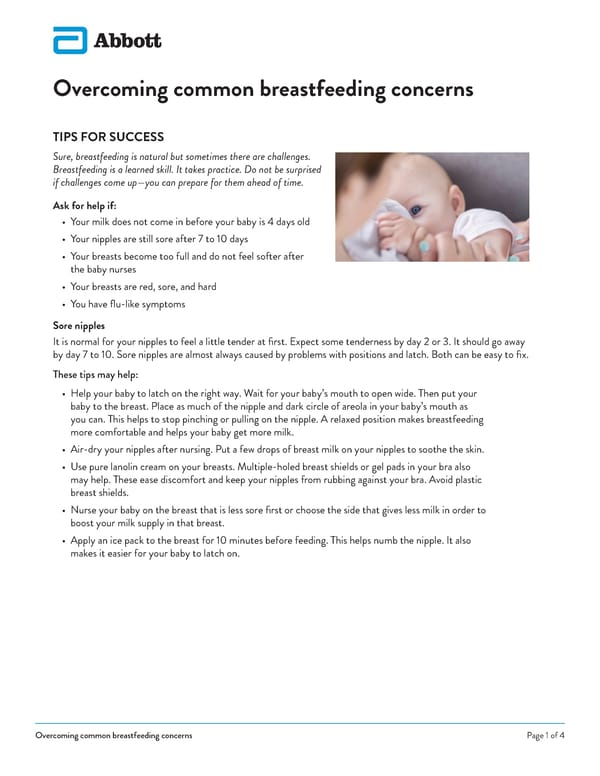Overcoming Common Breastfeeding Concerns
A guide providing tips for success and addressing common issues related to breastfeeding.
Overcoming common breastfeeding concerns TIPS FOR SUCCESS Sure, breastfeeding is natural but sometimes there are challenges. Breastfeeding is a learned skill. It takes practice. Do not be surprised if challenges come up—you can prepare for them ahead of time. Ask for help if: • Your milk does not come in before your baby is 4 days old • Your nipples are still sore after 7 to 10 days • Your breasts become too full and do not feel softer after the baby nurses • Your breasts are red, sore, and hard • You have flu-like symptoms Sore nipples It is normal for your nipples to feel a little tender at first. Expect some tenderness by day 2 or 3. It should go away by day 7 to 10. Sore nipples are almost always caused by problems with positions and latch. Both can be easy to fix. These tips may help: • Help your baby to latch on the right way. Wait for your baby’s mouth to open wide. Then put your baby to the breast. Place as much of the nipple and dark circle of areola in your baby’s mouth as you can. This helps to stop pinching or pulling on the nipple. A relaxed position makes breastfeeding more comfortable and helps your baby get more milk. • Air-dry your nipples after nursing. Put a few drops of breast milk on your nipples to soothe the skin. • Use pure lanolin cream on your breasts. Multiple-holed breast shields or gel pads in your bra also may help. These ease discomfort and keep your nipples from rubbing against your bra. Avoid plastic breast shields. • Nurse your baby on the breast that is less sore first or choose the side that gives less milk in order to boost your milk supply in that breast. • Apply an ice pack to the breast for 10 minutes before feeding. This helps numb the nipple. It also makes it easier for your baby to latch on. Overcoming common breastfeeding concerns Page 1 of 4
 Overcoming Common Breastfeeding Concerns Page 2
Overcoming Common Breastfeeding Concerns Page 2